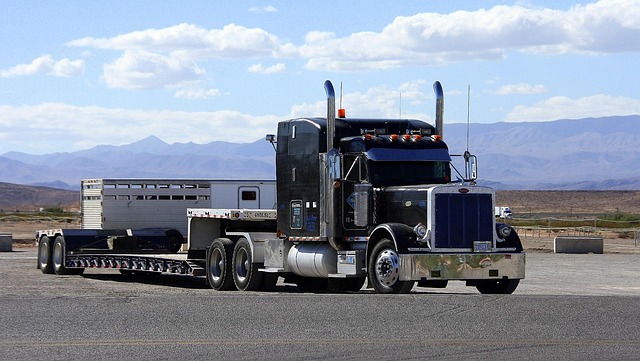Fleet vehicles, especially trucks, face distinct risks like accidents and mechanical failures due to high-value assets, extensive mileage, and varied conditions. Specialized fleet vehicle protection is crucial, focusing on physical damage coverage fleet trucks, truck repair insurance, collision coverage for fleets, and comprehensive fleet insurance. Small fleet damage policies offer affordable physical damage plans, while large fleets benefit from comprehensive options tailored to their needs, ensuring effective risk management and cost efficiency.
In today’s competitive landscape, efficient fleet management demands tailored insurance solutions. This article guides you through the intricacies of prioritizing policy customization to match fleet vehicle requirements. We explore key differences between standard and fleet coverage, common risks in trucking fleets, and essential policy components like physical damage, liability, and roadside assistance. Learn how to customize policies for specific fleet needs, compare affordable options, and implement effective strategies for risk management and compliance. Discover the importance of collision, comprehensive, truck repair, and fleet vehicle protection insurance in securing your trucking operations.
Understanding Fleet Vehicle Unique Needs

Fleet vehicles, whether they’re trucks or a mix of both, face distinct challenges on the road compared to traditional cars. Understanding these unique needs is the first step in tailoring insurance policies that offer comprehensive protection. Physical damage coverage, for instance, becomes paramount for fleet trucks, safeguarding against accidents and other incidents that could lead to significant repairs.
Trucking fleet insurance should encompass collision coverage, ensuring financial security in case of fender benders or more severe crashes. Additionally, a robust truck repair insurance policy is essential, providing the means to promptly fix or replace damaged vehicles. For small fleets, affordable physical damage plans can offer tailored protection without breaking the bank, while still meeting the specific requirements for fleet vehicle protection.
– Identifying key differences between standard vehicle insurance and fleet coverage

When it comes to insuring fleet vehicles, understanding the nuances that set them apart from standard vehicle coverage is crucial. Fleet coverage is tailored to address the unique risks and operational needs of businesses owning multiple vehicles, such as trucks. Unlike traditional insurance policies, fleet insurance plans offer comprehensive protection, including specialized physical damage coverage for fleet trucks. This ensures that in the event of an accident or damage, truck repair costs are covered efficiently, minimizing financial setbacks for fleet operators.
The key distinction lies in the level of customization and risk management. Standard vehicle insurance often provides basic liability and collision coverage, while fleet policies can be meticulously designed to include specific types of physical damage protection, such as comprehensive coverage for small fleet damage. This allows businesses to choose affordable plans that align with their trucking fleet’s requirements, offering peace of mind on the road.
– Examining common risks and challenges faced by trucking fleets

Trucking fleets often grapple with unique risks that require tailored insurance solutions. Common challenges include high-value assets, frequent mileage, and exposure to various driving environments. These factors contribute to a higher likelihood of accidents, mechanical failures, and other incidents leading to physical damage coverage fleet trucks claims. Without adequate truck repair insurance or fleet vehicle protection, these events can significantly impact operations and financial stability.
Collision coverage for fleets and comprehensive fleet insurance are essential components in mitigating these risks. Small fleet damage policies that offer affordable physical damage plans can help businesses manage unexpected costs effectively. By examining specific needs and potential hazards, companies can develop tailored policies that ensure their trucking fleets are adequately protected, fostering a safer and more efficient operational environment.
Evaluating Essential Policy Components

When prioritizing policy customization for fleet vehicles, evaluating essential policy components is a crucial step. Insurers should assess specific needs such as physical damage coverage for fleet trucks, ensuring comprehensive protection against accidents and collisions. This includes examining collision coverage for fleets, which can help mitigate costly repairs or replacements.
Affordable physical damage plans tailored to small fleets are particularly valuable. Truck repair insurance that encompasses both collision and comprehensive fleet insurance offers a robust safety net. By focusing on these key elements, businesses can secure effective protection for their trucking fleets, balancing cost-efficiency with comprehensive vehicle protection.
When it comes to insuring trucking fleets, a tailored approach is key. By understanding the unique risks and challenges faced by these operations, such as high usage rates and specialized vehicle types, businesses can effectively prioritize policy customization. Essential components like comprehensive fleet insurance, collision coverage, and robust truck repair insurance ensure that fleets are protected against various perils. Affordability should not compromise quality; there are accessible physical damage plans designed specifically for small fleets. Ultimately, a well-crafted policy tailored to these specific needs will provide fleet vehicle protection, giving businesses peace of mind on the road.
